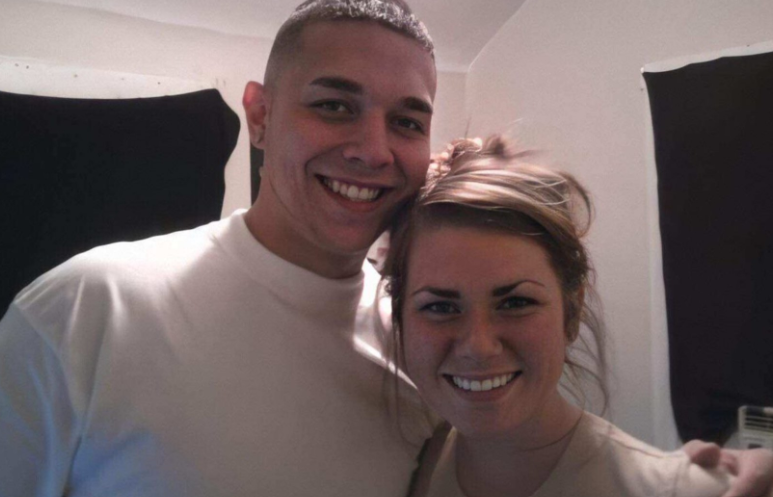On a cold January night in 2011, the quiet suburban community of Holland, near Toledo, Ohio, was rocked by a gruesome double homicide. Johnny Clarke, a 21-year-old aspiring rapper, and his girlfriend, Lisa Straub, a 20-year-old student, were found brutally murdered in Lisa’s family home. Their deaths sent shockwaves through the community and launched an intensive investigation that would expose dark undercurrents of crime and betrayal.
The Night of the Murders
On January 30, 2011, Johnny Clarke and Lisa Straub were spending a quiet evening together at Lisa’s parents’ house. Lisa’s parents were away on vacation, leaving the young couple alone. That night, Johnny received several phone calls, and witnesses reported that he seemed agitated.
The following day, Johnny’s parents, alarmed by their son’s sudden silence, went to the Straub residence. Inside, they found a scene of unimaginable horror. Johnny and Lisa were discovered bound with duct tape, their heads covered with plastic bags. Both had been strangled to death. The brutality of the crime suggested a personal motive, leading investigators to believe that the victims knew their killers.
The Investigation
The Toledo Police Department immediately launched a thorough investigation. Detectives sifted through phone records, interviewed friends and acquaintances, and analyzed forensic evidence from the crime scene. The initial focus was on Johnny’s recent activities and Lisa’s circle of friends. It quickly became apparent that Johnny had been involved in small-time drug dealing, which opened up numerous leads.
Key evidence included phone records showing that Johnny had been in contact with several people on the night of the murders. Surveillance footage from a nearby gas station also captured Johnny’s car, with an unknown individual seen in the vicinity. The police identified several persons of interest, but the investigation was hampered by the lack of direct evidence linking any individual to the crime scene.
The Arrests and Trial
After months of investigation, police arrested Samuel Williams and co-defendant Cameo Pettaway. Both men had criminal records and were known to associate with Johnny. Williams was a small-time drug dealer with a history of violent behavior, while Pettaway had previous convictions for theft and drug offenses.
The prosecution’s case hinged on circumstantial evidence and the testimony of witnesses who claimed that Williams and Pettaway had been seen with Johnny on the night of the murders. DNA evidence found on the duct tape used to bind the victims linked Pettaway to the scene. During the trial, the prosecution argued that the motive for the murders was robbery, suggesting that Williams and Pettaway believed Johnny had a substantial amount of cash or drugs at the Straub residence.
Despite the compelling evidence, the defense argued that the prosecution’s case was based on unreliable witness testimony and circumstantial evidence. They contended that the DNA evidence was inconclusive and that there was no direct link between the defendants and the crime scene.
After a lengthy trial, Samuel Williams was found guilty of aggravated murder, kidnapping, and burglary. He was sentenced to life in prison without the possibility of parole. Cameo Pettaway, however, was acquitted due to insufficient evidence linking him directly to the murders.

The Aftermath
The brutal murders of Johnny Clarke and Lisa Straub left a lasting impact on their families and the community. Johnny’s parents have been vocal about their dissatisfaction with the investigation, believing that more individuals were involved in the crime and that justice has not been fully served. Lisa’s family has also struggled with the devastating loss of their beloved daughter, finding it difficult to move on from the tragedy.
The case has continued to draw attention from true crime enthusiasts and investigative journalists. Various theories have emerged, suggesting possible alternative motives and suspects. Some believe that the murders were a result of a drug deal gone wrong, while others speculate that personal vendettas or gang-related activities may have played a role.
Unanswered Questions
Despite the conviction of Samuel Williams, many questions remain unanswered. The exact motive behind the murders is still a matter of speculation. Was it a robbery gone wrong, or were the killings premeditated for another reason? The presence of multiple individuals on the night of the crime, as suggested by witness testimonies, raises the possibility that others were involved but have not been brought to justice.
The case also highlights the challenges faced by law enforcement in solving complex crimes involving multiple suspects and circumstantial evidence. Advances in forensic science, such as DNA analysis, have been crucial in linking suspects to crime scenes, but they are not always definitive. The reliance on witness testimony, which can be unreliable, further complicates the pursuit of justice.
The tragic murders of Johnny Clarke and Lisa Straub remain a haunting reminder of the fragility of life and the dark undercurrents that can exist in seemingly peaceful communities. While the conviction of Samuel Williams brought some measure of justice, the full truth behind the events of that fateful night in January 2011 may never be known. As the families of Johnny and Lisa continue to seek answers and closure, the case serves as a poignant example of the enduring quest for justice in the face of unimaginable loss.










